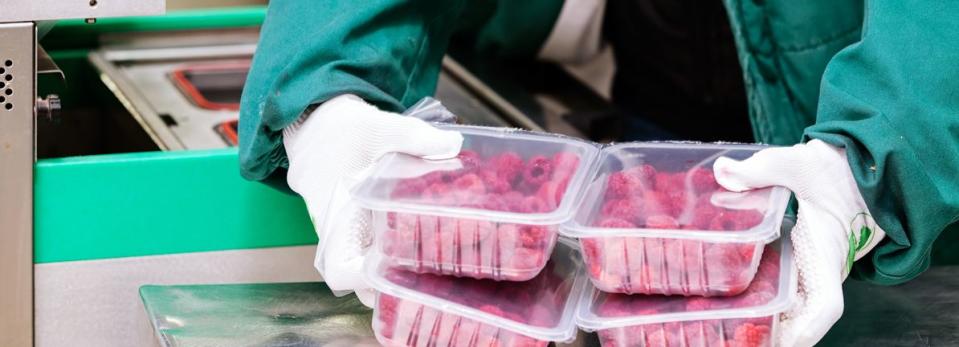What Can We Make Of Tassal Group Limited’s (ASX:TGR) High Return On Capital?

Want to participate in a research study? Help shape the future of investing tools and earn a $60 gift card!
Today we are going to look at Tassal Group Limited (ASX:TGR) to see whether it might be an attractive investment prospect. To be precise, we'll consider its Return On Capital Employed (ROCE), as that will inform our view of the quality of the business.
Firstly, we'll go over how we calculate ROCE. Next, we'll compare it to others in its industry. Last but not least, we'll look at what impact its current liabilities have on its ROCE.
What is Return On Capital Employed (ROCE)?
ROCE is a measure of a company's yearly pre-tax profit (its return), relative to the capital employed in the business. In general, businesses with a higher ROCE are usually better quality. Ultimately, it is a useful but imperfect metric. Renowned investment researcher Michael Mauboussin has suggested that a high ROCE can indicate that 'one dollar invested in the company generates value of more than one dollar'.
So, How Do We Calculate ROCE?
The formula for calculating the return on capital employed is:
Return on Capital Employed = Earnings Before Interest and Tax (EBIT) ÷ (Total Assets - Current Liabilities)
Or for Tassal Group:
0.11 = AU$97m ÷ (AU$1.0b - AU$145m) (Based on the trailing twelve months to December 2018.)
So, Tassal Group has an ROCE of 11%.
See our latest analysis for Tassal Group
Is Tassal Group's ROCE Good?
ROCE can be useful when making comparisons, such as between similar companies. Tassal Group's ROCE appears to be substantially greater than the 8.2% average in the Food industry. I think that's good to see, since it implies the company is better than other companies at making the most of its capital. Separate from Tassal Group's performance relative to its industry, its ROCE in absolute terms looks satisfactory, and it may be worth researching in more depth.
Remember that this metric is backwards looking - it shows what has happened in the past, and does not accurately predict the future. Companies in cyclical industries can be difficult to understand using ROCE, as returns typically look high during boom times, and low during busts. ROCE is, after all, simply a snap shot of a single year. What happens in the future is pretty important for investors, so we have prepared a free report on analyst forecasts for Tassal Group.
How Tassal Group's Current Liabilities Impact Its ROCE
Current liabilities include invoices, such as supplier payments, short-term debt, or a tax bill, that need to be paid within 12 months. Due to the way ROCE is calculated, a high level of current liabilities makes a company look as though it has less capital employed, and thus can (sometimes unfairly) boost the ROCE. To check the impact of this, we calculate if a company has high current liabilities relative to its total assets.
Tassal Group has total liabilities of AU$145m and total assets of AU$1.0b. As a result, its current liabilities are equal to approximately 14% of its total assets. Low current liabilities are not boosting the ROCE too much.
Our Take On Tassal Group's ROCE
This is good to see, and with a sound ROCE, Tassal Group could be worth a closer look. You might be able to find a better buy than Tassal Group. If you want a selection of possible winners, check out this free list of interesting companies that trade on a P/E below 20 (but have proven they can grow earnings).
If you are like me, then you will not want to miss this free list of growing companies that insiders are buying.
We aim to bring you long-term focused research analysis driven by fundamental data. Note that our analysis may not factor in the latest price-sensitive company announcements or qualitative material.
If you spot an error that warrants correction, please contact the editor at editorial-team@simplywallst.com. This article by Simply Wall St is general in nature. It does not constitute a recommendation to buy or sell any stock, and does not take account of your objectives, or your financial situation. Simply Wall St has no position in the stocks mentioned. Thank you for reading.

 Yahoo Finance
Yahoo Finance 
